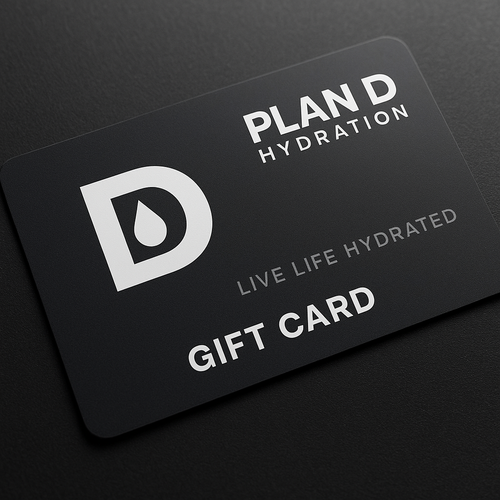Long flights, changing climates, airport snacks, and time zone shifts—travel can be rough on your body, and dehydration is one of the most common (and overlooked) issues travelers face.
In 2025, new data shows that hydration plays a major role in everything from jet lag and immune response to energy and digestion. Yet most travelers forget to drink enough—or choose the wrong drinks entirely.
Here’s how to stay hydrated while traveling, based on the latest 2025 science—and why bringing a clean electrolyte mix like Plan D might be your best travel companion.
Why Travel Dehydrates You (Fast)
Travel creates the perfect storm for fluid loss:
-
Airplane cabins are drier than deserts (10–20% humidity)
-
Altitude increases fluid evaporation through your skin and breath
-
Salty snacks, caffeine, and alcohol add to fluid depletion
-
Time zone shifts disrupt your body’s natural thirst and bathroom rhythms
A 2025 study from the International Travel Health Council found that travelers on flights longer than 5 hours lost an average of 1.6 liters of water through breath and skin alone—even when sitting still (Jameson & Li, 2025).
Common Symptoms of Travel Dehydration
-
Fatigue or jet lag that lasts longer than expected
-
Headaches or dizziness after landing
-
Digestive irregularity or constipation
-
Dry mouth, skin, or eyes
-
Brain fog, irritability, or mood swings
7 Smart Hydration Tips for Travelers in 2025
1. Start hydrated before you leave
Begin hydrating 24 hours before travel. A serving of Plan D in the morning helps prep your body to hold on to water longer.
2. Pack electrolytes—skip the sugary sports drinks
Electrolyte powders like Plan D take up zero space, don’t count toward your liquid limit, and help you stay balanced on the go. Choose a sugar-free, gut-friendly option without stevia to avoid bloating or crashes.
3. Skip coffee and wine in the air
Both are dehydrating. If you indulge, add an extra serving of electrolytes to your travel day.
4. Bring an empty bottle and fill it post-security
Airlines rarely give enough water. Most travelers get under 16 oz for an entire flight. Bring your own bottle and refill at hydration stations or cafes.
5. Eat hydrating snacks
Fresh fruits like oranges, grapes, or cucumbers travel well and help replenish water and natural electrolytes.
6. Set reminders
Use your phone or smartwatch to remind you to sip every 30–45 minutes while in transit.
7. Hydrate again when you land
This helps flush your system, rebalance your body clock, and reduce next-day fatigue.
Why Plan D Is a Must-Pack for 2025 Travelers
-
Single-serve, TSA-friendly packets
-
Zero sugar, zero stevia, zero bloating
-
Clean ingredients, monk fruit-sweetened
-
Balanced electrolytes to prevent energy crashes and dehydration
Whether you’re flying across the country or road-tripping all weekend, Plan D helps you feel sharper, lighter, and more comfortable every step of the way.
Stay hydrated. Travel smarter. Don’t leave without Plan D.
Citations
1. Moghaddam, Marjan.
“Experts Say This Disney World Habit Is Making You More Exhausted.” Disney Food Blog, 12 Mar. 2024.
This article highlights how neglecting hydration can lead to increased fatigue among Disney World guests.
2. “Staying Hydrated & Finding Water at Disney World.” Touring Plans, 23 May 2025.
This guide discusses signs of dehydration, such as fatigue and irritability, and provides tips on staying hydrated while visiting Disney World.
https://touringplans.com/blog/staying-hydrated-finding-water-at-disney-world/
3. Ryndach, Marina, et al.
“Recreational and Health Aspect of Theme Park Activities.” BIO Web of Conferences, vol. 120, 2024, p. 01024.
This study examines the health aspects of theme park activities, emphasizing the need for adequate hydration to prevent fatigue.
https://www.bio-conferences.org/articles/bioconf/pdf/2024/39/bioconf_mbfa2024_01024.pdf
4. McShay, Kelsey.
“Roller Coasters and T1D: How to Navigate the Ups and Downs of Theme Parks.” Type1Strong.org, 14 Jan. 2024.
This article underscores the importance of hydration to prevent fatigue and other symptoms during theme park visits, especially for individuals with Type 1 Diabetes.
